|
We have previously talked about the oldest and largest trees in the world. There are plenty of other questions we may have, such as, what is the fastest growing tree or tree with the widest spreading branches. Here are a few interesting trees and tree-related facts to entertain your curiosities. FASTEST GROWING TREE You may know a silver maple tends to grow faster than a white oak. You may be aware that bamboo grows very fast, which can grow 1.5" per hour /2.9 feet per day. You can literally watch it grow! Even though it may look like a tree, bamboo is actually a type of grass. So what is the fastest growing tree? Albizia (Falcataria moluccana), is a tree species that is native to Indonesia and Papua New Guinea. Growing in Malaysia, albizia has been documented in reaching 35ft in 13 months, or over 2.5ft per month! A white oak may need 35 years to reach that height. WIDEST SPREAD OF A TREE The crown of a tree is the upper portion which includes the branches, twigs and leaves. Pines usually have a more upright growth habit, being taller than they are wide. Trees growing in an open area have the opportunity to develop a wider crown than those growing in the forest. A bur oak that you may see in a farm field may have a broader spread than it is tall. What tree supports the widest spreading crown? An Indian banyan (Ficus benghalensis) known as Thimmamma Marrimanu & growing in southern India has the widest spreading crown discovered to date. Its entire crown covers almost 5.5 acres (620ft x 475ft), an area equivalent to three soccer fields. Banyan trees have an interesting growth habit where they send down vine-like growths from branches, which take root once they reach the ground & thereby creating a trunk-like support for the branch as it continues to extend horizontally. Thimmamma Marrimanu is supported by nearly 4,000 of these prop roots/trunks. Banyans are considered a single-trunk tree although they generate the prop “trunks”. Notice the 4 trunks in the distance to the left side of the picture above. These are part of this same tree. Compare this to Pando, a quaking aspen which covers 106 acres in Fish Lake National Forest in Utah. Quaking aspen (Populus tremuloides) is a clonal species, meaning the underground root system sends up multiple trunks, each looking like an individual tree.. 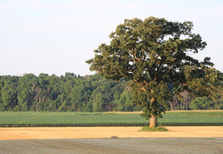 Solitary trees growing in the middle of crop fields are a common sight. Solitary trees growing in the middle of crop fields are a common sight. MOST REMOTE TREE Speaking of a bur oak that you may see growing all alone in the middle of a corn field, have you ever wondered where the most solitary tree may be? I have. The most remote tree is believed to be a Sitka spruce (Picea sitchensis) growing on the subantarctic Campbell Island, New Zealand. It was planted in the early 1900’s and its nearest companion is on the Auckland Islands, over 120 miles away! MOST UNUSUAL PROPERTY OWNER Do trees have rights? Apparently one does. In the early 1800’s, a property owner so loved the white oak (Quercus alba) growing on his property that he reportedly deeded the land to the tree itself upon his passing. The tree owns itself. That tree fell in 1942 and was replaced with a new tree grown from one of its acorns. While the deed is not known to exist, the residents and community of Athens, GA recognize the tree’s title to the land. MOST TREES PLANTED IN A DAY I'd like to think everyone reading this has planted at least one tree in their life. Preferably a handful. Some of us have planted hundreds or even thousands. Having worked on tree farms and reforestation crews, I have planted hundreds of trees in a single day. Planting a bare-rooted seedling goes a lot faster than a larger tree from the nursery! While I am proud of the number of trees I have planted over the years, Antoine Moses holds the Guinness World Record as the individual planting the most trees in 24 hours. He planted 23,060 trees in La Crete, Alberta, Canada on July 17, 2021! What did you do with your time during the Covid-19 pandemic? My curiosity and interest in these types of tidbits doesn't end there. How much water can a tree take in each day? What tree has the largest fruit or seed? How deep do tree roots grow? We'll take a look at some of these and other tree trivia(l) facts later this year!
0 Comments
Many of us feel a sense of admiration and adoration when we look upon an old or exceptionally large tree. Given many tree species live to ages well beyond human life expectancy, they can provide a connection to something larger than ourselves such as our ancestors, our moment in time, and our place in Nature. It is natural to have respect for our elders as they played a part in getting us to where we are today. The same can be said for the respect we have for old trees and old-growth forests given the many benefits we receive and role they play in healthy environments and ecosystems. A common question I am asked is, "how old is that tree?" Having studied and worked with trees for over 30 years, you’d think I’d be able to rattle off an age about as quickly as I can identify the type of tree it is. However, estimating the age of a tree simply by looking at it is nothing more than an educated guess at best, and we usually aren't privy to its growing conditions throughout its life. There are 3 primary ways we can estimate a tree's age. Two involve counting the annual growth rings and one uses a mathematical formula based on tree size. Counting tree rings tends to be more precise as size is not a reliable measurement eventhough trees generally get larger with age. However, this third method can often get us in the ballpark (albeit a rather large park). Having an idea of a tree’s age opens up the potential for admirers to build connection to and respect for some of Nature’s most amazing organisms and why I don’t mind engaging in the conversation.  An increment borer is a tool used by professionals who wish to view the annual growth rings of a tree. The tool is in essence a long metal tube with spiral teeth on the outer side, allowing it to be screwed into the trunk. Being a hollow cylinder, a “straw” or wood rod is captured inside the tube. When we remove this straw/rod, we have a cross-section of the growth rings. If you screwed into the center of the stem, you then have a rod that includes all of the growth rings. Not only can these rings be counted to help us determine the age of the tree, but also hold quite a bit of information that can be studied in order to help us look back in time.
Of course we don’t always hit the center of the stem. If your borer isn’t long enough to reach center, you miss the center, or should the middle of the tree be hollow, your extracted straw will not have all of the growth rings. In these instances, we may still be able to extrapolate the estimated age of the stem through calculating the average annual growth rate of the rings you did capture. Researchers, educators, and some tree fanatics will spend the money on this specialized equipment. The exact age of a tree has little impact when it comes to prescribing health related treatments, which is why this is not a standard piece of equipment used by arborists and related professions. Just Tell Me the Answer Since a tree’s age is a metric that often appeals to the general public and tree enthusiasts, there is another method that can be used to estimate ages. If we measure enough trees of a specific species, an average annual growth rate can be calculated for the species. Thanks to numerous research studies, this data has been used to generate growth factor values for a number of common tree species. This growth rate value is used in the following formula to estimate tree age: Growth Factor x DBH = Age The Growth Factor is basically the number of growth rings a species puts out per inch of trunk growth. The slower a tree grows, the more growth rings per inch, thus the higher the Growth Factor number. Faster growth leads to wider growth rings, therefore the Growth Factor will be a lower number relative to the size of the trunk (i.e. fewer rings per inch). DBH stands for “diameter at breast height”, which is a common measurement used when working with trees. In the most straight-forward of situations, the diameter, aka width of the trunk, is measured at 4.5 feet above the ground (breast/chest height). 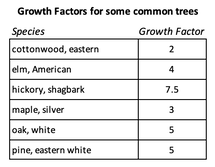 Utilizing the Gorwth Factor chart and formula above; if you have a 10” diameter silver maple, your tree is likely to be about 30 years old (3.0 growth factor x 10”dbh = 30 years age). Remember, this only provides an estimate based on the average growth rate of silver maple. Depending on the growing conditions it developed under, I wouldn't be surprised if this tree is 20 years or even 50 years old. If the tree has been growing under fertile and ideal conditions, then growth rate can be greater and the tree younger in age. If the tree is growing under stressful conditions or in poor soil, then its rate of growth will be slower and an older age. (We'll look at an extreme example of this shortly!) To further complicate the matter, a tree is likely to experience years of greater growth and periods of slow growth throughout its lifetime. For example, trees that have a new home built next to them where construction equipment caused soil compaction to its root zone are likely to experience a period of slowed growth. The duration and extent of this negative impact is unknown in most cases and an example of why the formula method can only aid us in guess-timating a tree’s age. These examples are not meant to cause confusion, but rather aid in understanding why there can be such great variance when estimating age solely by tree size. Such variables can be taken into consideration when we are aware of them. When considering such variables, I typically offer an estimated age range that may span 25-50 years or more. If a ballpark estimate is good enough to satiate your curiosity, use the formula. 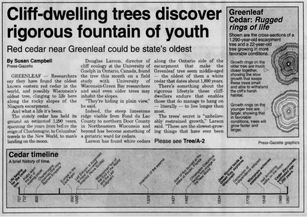 Click image to read more about the discovery of this tree. (External link to Wausau Daily Herald) Click image to read more about the discovery of this tree. (External link to Wausau Daily Herald) Growing Older But Not Up If trees get larger as they age, it may stand to reason that the largest trees are likely the oldest trees and vice versa. This is not usually the case, so let's consider this example. The oldest known tree in Wisconsin has been estimated close to 1,300 years old. (An increment borer was used for this estimation.) It is an eastern red cedar (Juniperus virginiana) with a trunk only 10 inches wide (10" dbh). This tree is growing on the side of a cliff. Growing out of cracks in the rock face is not exactly the best soil conditions for any tree, yet this tree has been able to survive while putting on very little growth per year. This demonstrates that the site conditions a tree is growing in can greatly influence its rate of growth considering an redcedar growing in ideal conditions could likely grow to a 10” diameter trunk within 50 years. This is in large part why trying to guess a tree’s age simply by looking at its size can be less than precise and why some professionals decline to provide age estimates. Is Age Just a Number I have enjoyed time amongst trees that sprouted in each of the last 4 millennia. I regularly visit a 200-250 year old bur oak, spending time in its branches thinking of all the changes it has seen in its lifetime. While we may not need to know the exact age of the tree, it is neat to be able to have an idea of how old a tree may be as knowing its age often instills a sense of admiration and connects us to previous generations and our point in history. A bur oak, not far from my house, recently had a large stem removed, revealing a 125-year history and an opportunity for reflection. Photos borrowed from:
Cold temperatures, shortened daylight hours, and lack of greenery can fool anyone into thinking there isn’t much reason to head outside in winter. It may seem like life and Nature have hit the pause button. Don’t be fooled. There is a lot going on out there! With less foliage present in the winter, there are many characteristics that become more apparent and less obscured by the sensory overload during the growing season. If you are not sure of what you are looking for, all you need to do is get out there and let your senses be the guide. SIGHT Fall leaf color is one of the more noticeable aspects of trees that people enjoy. One study estimated a 30-billion-dollar annual contribution to the tourism industries of the 24 states in the eastern U.S. alone. While the fall color change can be enjoyed through the windshield, there are many more details to enjoy when you slow down and spend time in the presence of a tree. Branches twist and wind their way to openings where their leaves can capture sunlight. This winding nature of the branches leads to an artistic framework. The abstract patterns can be enjoyed from a number of angles and perspectives, such as when winter leaf drop exposes the branching structure of deciduous trees. Bark color and textures vary greatly between species. River birch’s bark layers peel and curl along the trunk, revealing salmon colored inner bark. This attractive coloration and unique look make it a popular tree in landscapes. It may take on added winter interest if you do a little reading on a potentially useful characteristic of birch bark. Birch bark contains a compound that repels water, keeping the tissue dry. It is also flammable. A perfect combination when needing to start a campfire. 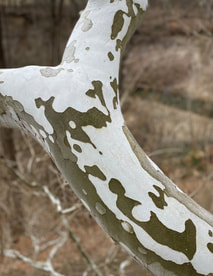 Sycamore's unique bark pattern Sycamore's unique bark pattern I particularly enjoy the texture, colors, and patterns of sycamore bark. The flaking bark leaves behind an evolving camouflage pattern formed as the green, gray, and tan papery layers exfoliate to reveal bright white inner bark on stems. In late winter, as we begin to anticipate the coming spring weather, the tiny leaf buds begin to swell and provide an early hint of the colorful season to come. This slight coloration is seen in the tops of the trees, contrasting against the brown and gray branches and blue skies. As winter draws to a close, we can enjoy the hint of red atop silver and red maples as well as the vibrant yellow cast along weeping willow twigs.. TOUCH In Wisconsin we are fortunate to have northern white cedars. They make my personal top-ten list of favorite tree barks! As northern white cedars age, their bark shreds into thin linear strips that run up and down the trunk. It has a slightly spongy feel in the outer layers of bark if you press into it with your fingertips and feels soft to the touch as you run your fingers along. There are numerous areas where we can get out and enjoy northern white cedar across Wisconsin, with one of my favorite areas being Newport State Park in Door County. Closer to my home in Waukesha County, Retzer Nature Center has a few groves of cedars around the park, one of which forms the centerpiece of the parking lot. Even your feet will notice the soft, cushiony feel of the leaf litter blanketing the ground under a grove of northern white cedar. You can enjoy their bark at any time of year, but spending time with them in winter has far greater impact for me as they maintain their green foliage through the winter. Immersing myself in a canopy of green when brown and gray dominate the winter color spectrum is like a breath of fresh air. SMELL I can seldom pass on the opportunity to bend down and smell a flower in bloom. Some have little to no fragrance. Some are enjoyable and others might not be so pleasant. Regardless, the experience of stopping to smell the flowers pulls me into the present moment. Even with the lack of flowers in the winter months, there are a few trees that I have a hard time passing by without taking in their pleasant fragrance. Some may have soothing effects and others I find energizing. 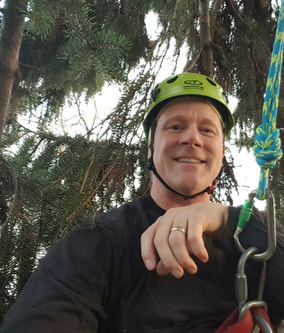 Nestled in the branches of a spruce, immersed in the pleasant scent Nestled in the branches of a spruce, immersed in the pleasant scent Several of our coniferous evergreens stimulate my sense of smell on winter hikes. Northern white cedar and eastern white pine are two of my favorites. Hemlock and spruce also do the trick. Walking near any one of these trees is likely to awaken your sense of smell. One place I enjoy immersing myself in these aromatic compounds is along the Ice Age Trail in Hartman Creek State Park. As the trail winds through rolling, forested terrain of oak, pine, and maple, you pass through pockets of spruce & hemlock. Even if you are not able to identify them by name, your nose will surely let you know it is time to slow down and breathe it all in! The essential oil and aromatherapy industries promote these compounds for their beneficial effects on us; like relaxation, invigoration, enhancing concentration, decreasing hyperactivity, reducing stress, easing tension, and clearing the mind. I use them in diffusers at home and in my office; but they are no substitute for heading out and enjoying them right from the source! SOUND I enjoy the distinct crunching sounds underfoot during a winter hike. Whether the trail is lined with fallen oak leaves or covered in freshly fallen snow, neither of these unique sounds were something I experienced while growing up in Puerto Rico and southern Florida. Another one of the sounds I go in search of in winter leads me to stands of eastern white pine. Not only does the foliage dampen the stark sounds from traffic and other noise pollution sources, the fine and feathery texture of the needles emit a soothing “whoosh” as the breeze passes through. Pair this calming sound with the soft texture of the needles and pleasant aroma and you may be able to understand why sitting on a branch near the top of an eastern white pine is one of my favorite places to be! TASTE Tastes related to trees is most readily appreciated by tasting the fruits, seeds, and nuts. Therefore, this sense is more commonly enjoyed during the growing season as opposed to winter. One of my favorite tasting experiences was the day I sat along the bank of a tributary to the Des Moines River in central Iowa. I was sitting amongst a stand of black walnut trees in late summer as leaves and walnuts fell around me. I’ve never cared for store bought walnuts (which are English walnuts), yet given the abundance of nuts I decided to try one. It was the best tasting nut I’ve ever tasted. The tenderness of the nut and the bold flavor, wow! I spent the afternoon feasting upon freshly fallen nuts and watching the river flow past as the sun sank closer to the horizon. Since most of the edible fruits have fallen, rotted, or been consumed by animals come winter, I resort to enjoying a variety of tastes from various twigs. Some species have a distinct taste and often used by knowledgeable professionals as an aid in identification. 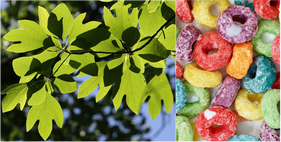 Crushed leaves and bark of younger twigs has a pleasant aroma of Froot Loops! Crushed leaves and bark of younger twigs has a pleasant aroma of Froot Loops! Black or sweet birch is known for its wintergreen taste, black cherry for its somewhat cherry or almond-like taste, and sassafras has flavors of spiced fruit. Since some of these species may also contain low levels of toxic compounds when ingested, you may opt for the alternative experience of scraping the bark of fresh twigs to reveal the aroma. Sassafras has a fruity aroma like that of Froot Loops! Using the sense of taste should be approached with caution. Even if a particular plant is known to be edible, it may still contain toxic compounds, certain people may have a sensitivity, or there may be similar looking plants that may be toxic. SENSORY JOURNEY
While we may spend more time indoors during the winter months, there are plenty reasons to get out and enjoy the season. If not just to get out in the sunshine or bathe in the green colors of pines, spruces, and other evergreens, I'm also drawn outside to witness the unique aspects visible in winter and appreciate the different experience they provide. Acknowledging and engaging in the changing of the seasons helps to build layers of memories, can strgengthen your emoitonal attachment to a place, and grow your appreciation of life. Although you may take it for granted, bark can tell you a lot about a tree. Get up close and personal with a tree and let Curt show you how interesting bark can be. Plus, he shares some of the things we do as climbers to minimize the damage we cause.
You’ve heard the expression “Stop and smell the roses.” How about the leaves, blossoms, bugs and even fungus?! Join me in the tree to appreciate the little miracles that are right above your head. I take a lot of pictures during our climbs. The experience is different for each climber, each person benefiting from it in their own way. Describing the different benefits that come from climbing trees can be difficult. But you can see it for yourself in this week’s video. Register for a climb today and come experience it for yourself! Through this past year, the vast majority of climbers returned to the ground with a sense of accomplishment, feeling of pride, boost in self-confidence, and a big smile on their face. We met parents who were supportive of their children, speaking with words of love and encouragement. There were participants who overcame their trepidation and ended up excelling and enjoying their time above the ground. A number of children and young adults had the exciting opportunity to participate in an activity alongside their parents and grandparents. With so many fantastic memories and wonderful people, I was tempted to put together a year-end video recap of the year. We were able to capture many nice images of climbers, but there are too many for us to make a video with a realistic time length. In this period of reflection, I am inspired to share your pictures in a series of videos related to our experiences with trees and tree climbing. Inspired by Robert Fulgham's book All I Really Need to Know I Learned in Kindergarten... and our interactions together, I created this video to share a few of the lessons trees have taught me throughout my journey thus far. Your day in the trees may have been captured in this video. If not, I hope you will keep an eye out in the coming months as I cycle through as many of the images as I can in upcoming videos. Other images will grace our website pages and posts on Facebook and Instagram. |
AuthorAs a G.O.T.C. Recognized Master Instructor & Facilitator, I.S.A. Board Certified Master Arborist, and T.C.I.A. Certified Treecare Safety Professional, Curt has spent over 30 years dedicated to the study and care of trees. Categories
All
Archives
May 2024
|
|

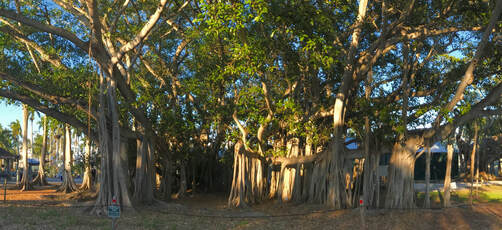
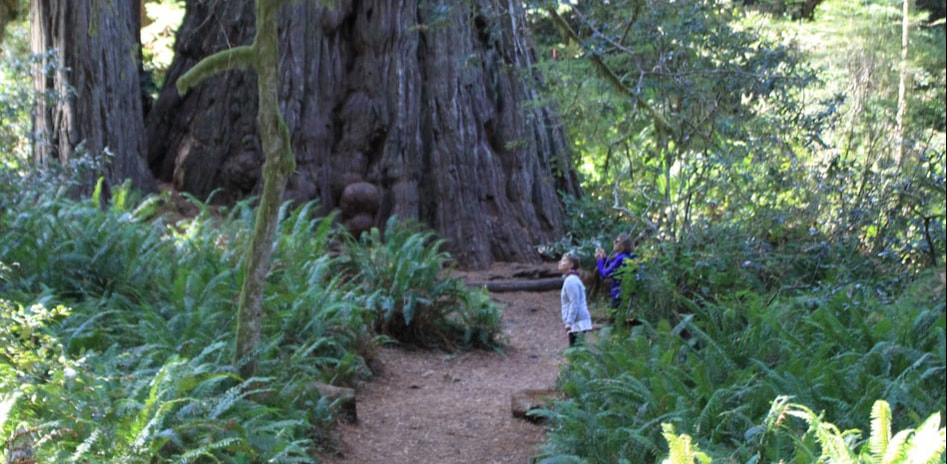
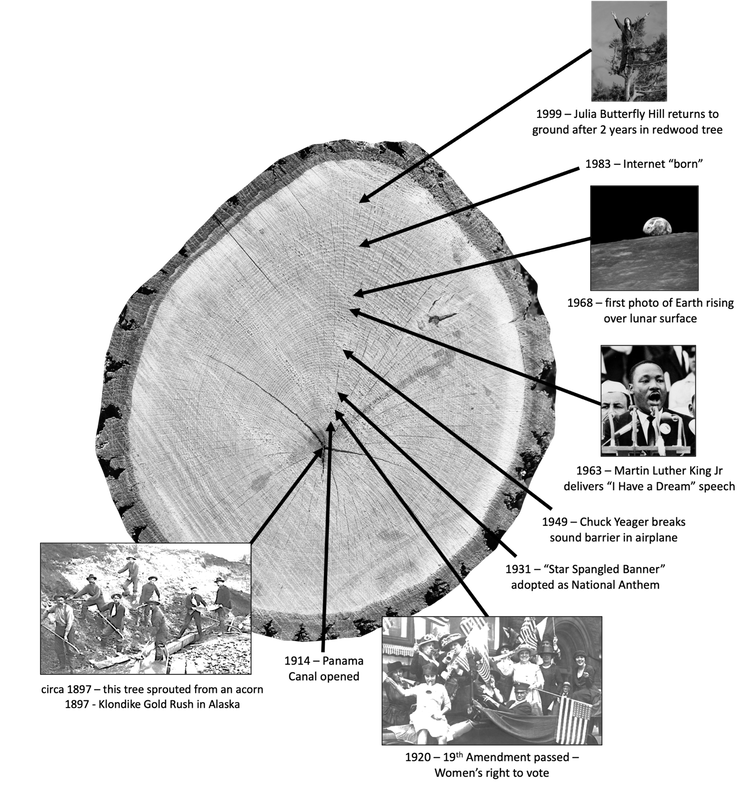
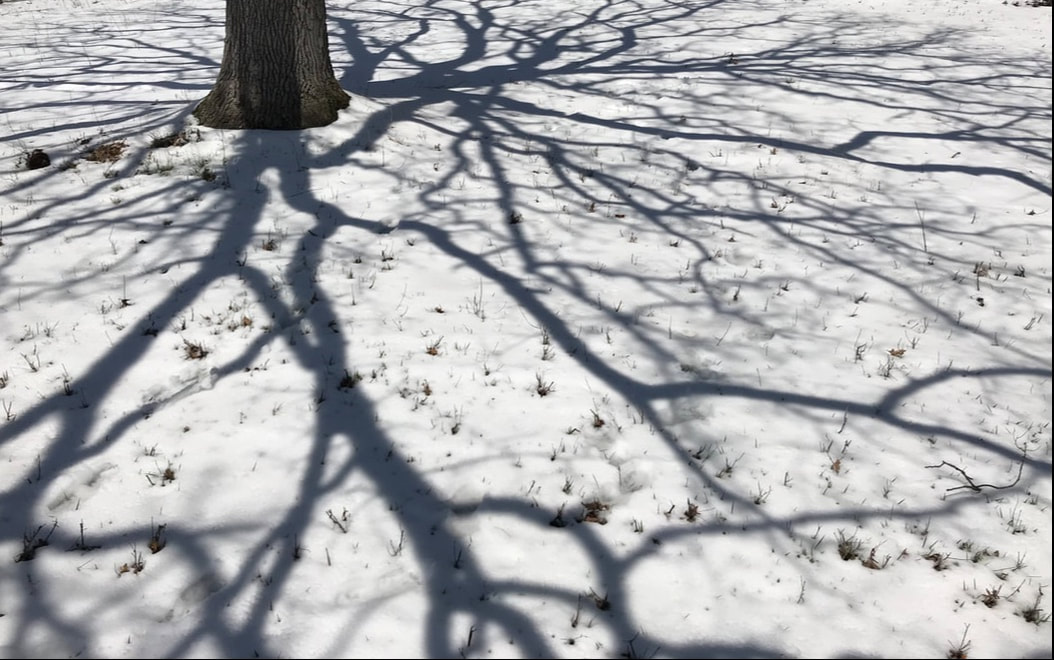
 RSS Feed
RSS Feed
